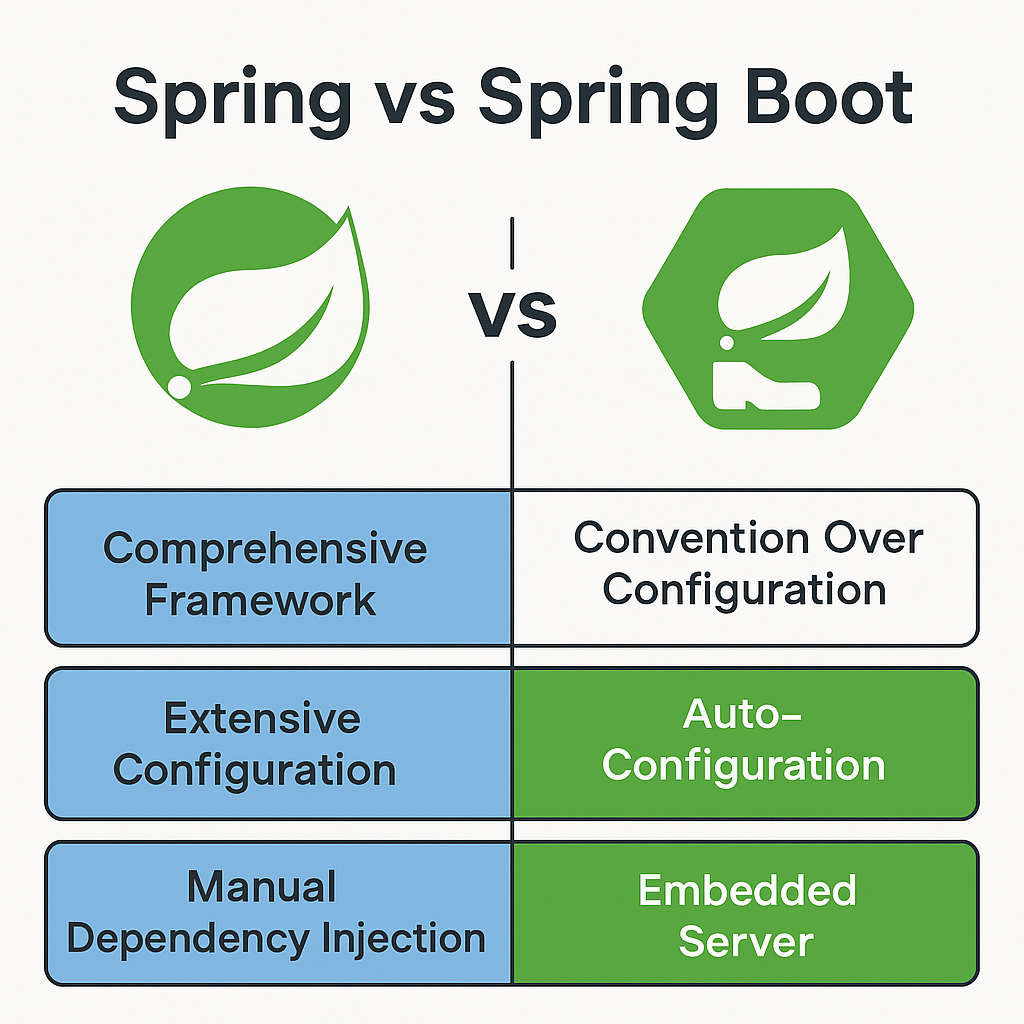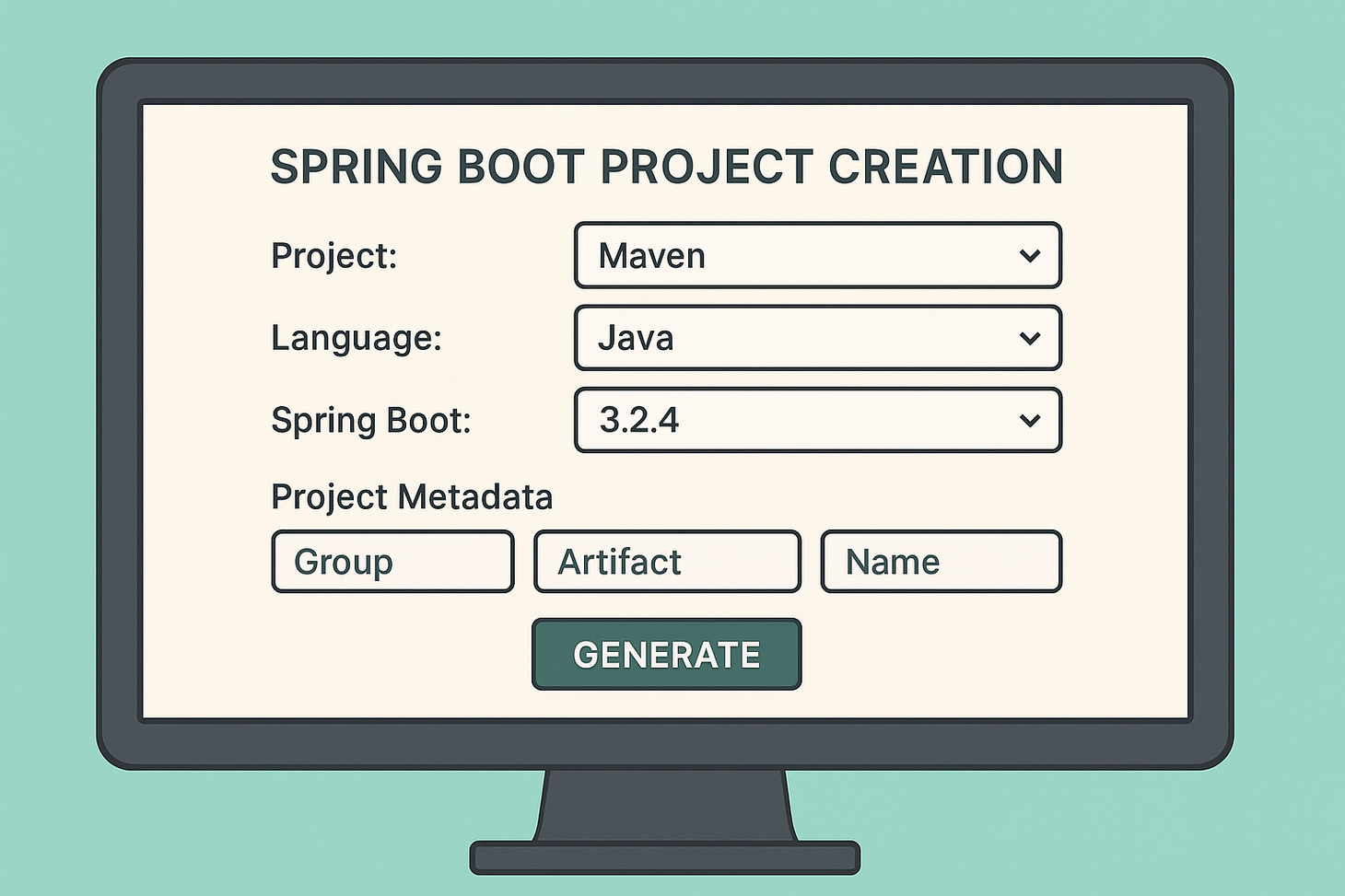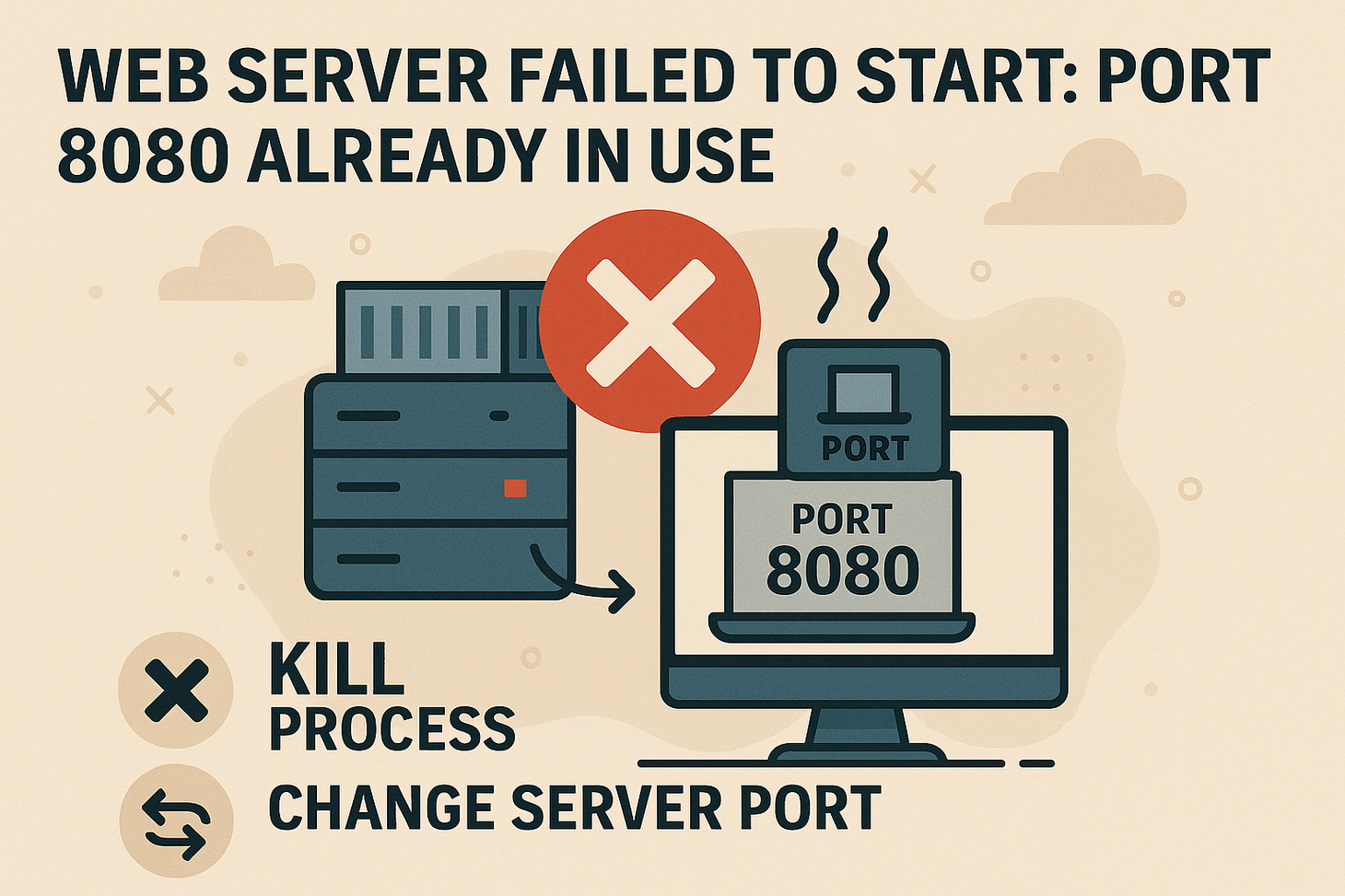Spring vs. Spring Boot: Key Differences Developers Must Know
Spring or Spring Boot? One gives you full control, the other gets you up and running fast. If you're building Java apps, knowing the difference isn't optional—it’s critical. Here’s the breakdown every dev should read.

Table of Contents
When building Java-based web applications, two names dominate the conversation: Spring and Spring Boot. While they’re part of the same ecosystem, they serve different purposes. This guide breaks down the key differences, benefits, and use cases—so you know which to use and when.
What Is Spring?
Spring Framework is a full-featured, open-source framework for building enterprise-grade Java applications. It provides tools for dependency injection, data access, transaction management, AOP, and more. It's been around since 2002 and provides a comprehensive infrastructure for enterprise-level development.
Key Features:
- Dependency Injection (DI): Core to Spring, it makes code more modular and testable.
- Aspect-Oriented Programming (AOP): Separates cross-cutting concerns like logging and security.
- Transaction Management: Simplifies handling database transactions.
- Spring MVC: Enables the creation of RESTful web applications.
- Security, Data, JMS, and more: Modular design lets you pick what you need.
Highlights:
- Full control over configuration
- Modular structure
- Ideal for complex, legacy, or enterprise systems
Note: Use Spring when you need full control over configuration and behavior. It's ideal for large-scale, complex enterprise apps where customization is critical.
What Is Spring Boot?
Spring Boot builds on top of Spring to eliminate configuration boilerplate. It’s opinionated, fast, and production-ready—perfect for developers who want to focus on building features, not wiring infrastructure. It was introduced in 2014 to reduce boilerplate code and configuration overhead.
Key Features:
- Auto-Configuration: Automatically configures your application based on dependencies.
- Embedded Servers: Runs on Tomcat, Jetty, or Undertow out of the box—no WAR files needed.
- Opinionated Defaults: Pre-set best practices to help you get started fast.
- Production-Ready Features: Built-in health checks, metrics, and monitoring with Spring Actuator.
- Simplified Dependency Management: Via Spring Boot Starters.
Highlights:
- Auto-configuration of Spring components
- Embedded servers (Tomcat, Jetty, Undertow)
- Pre-configured production tools (metrics, health checks)
- Simplified dependency management with Starters
Choose Spring Boot for rapid application development, microservices, or when you want to get up and running fast without heavy setup.
Spring vs. Spring Boot: A Developer's Comparison
| Feature | Spring | Spring Boot |
|---|---|---|
| Setup | Manual | Auto-configured |
| Server | External (e.g., Tomcat) | Embedded |
| Learning Curve | Steep | Gentle |
| Configuration | Custom | Convention-over-configuration |
| Startup Time | Longer | Faster |
| Use Case | Enterprise-level apps | Microservices, rapid dev |
When to Use Spring (Classic)
Choose Spring if:
- You're working with a legacy or monolithic system.
- You need fine-grained control over your application setup.
- You’re building an application from scratch with custom architecture.
When to Use Spring Boot
Go with Spring Boot if:
- You want to build and deploy quickly.
- You're building REST APIs or microservices.
- You need out-of-the-box support for production monitoring.
Developer FAQs (Tips)
Q: Can I use Spring Boot in a large enterprise project?
Yes. Spring Boot scales well and is used in many enterprise applications. You can even override its auto-configured defaults for more control.
Q: Is Spring Boot just a simplified version of Spring?
Not exactly. Spring Boot uses Spring under the hood—it’s more of a layer on top that removes the tedious setup work.
Q: Do I need to learn Spring before Spring Boot?
It helps, but it’s not mandatory. Spring Boot is beginner-friendly and a good way to learn Spring concepts organically.
Q: Can I switch from Spring Boot to classic Spring later?
A: Yes, but it's usually more efficient to disable specific Boot features than to switch frameworks entirely.
Q: Does Spring Boot replace Spring?
A: No. Spring Boot is built on top of Spring. It simplifies usage, but the core Spring principles still apply.
Q: Is Spring Boot suitable/good for large applications?
A: Absolutely. It powers large-scale apps at companies like Netflix, Amazon, and Alibaba.
Finally...
Both Spring and Spring Boot are powerful tools—but they serve different needs. Spring gives you that freedom if you're building a high-complexity system that demands granular control. Spring Boot is the way to go if you’re looking for speed, simplicity, and scalability.
Pro tip: In most modern development scenarios—especially with cloud and microservices—Spring Boot is the default choice. But knowing Spring fundamentals will always make you a stronger Java developer.
Conclusion: Which One Should You Use?
- Use Spring Boot for speed, microservices, cloud-native development, and modern workflows.
- Use Spring when you need total control and custom configuration for complex systems.
Bottom Line: -> Spring Boot is smarter, faster default. But understanding Spring underneath will help you write better, more scalable Java code in any context.
Gopi Gorantala Newsletter
Join the newsletter to receive the latest updates in your inbox.


